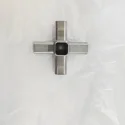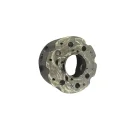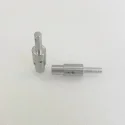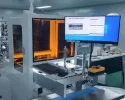2023-03-06
There are many ways to convert CAD designs into physical reality. Both subtractive and additive manufacturing can be used to produce parts with digital precision. For best results, choose a manufacturing process that matches the structural and economic needs of your design.
Most parts can be made by 3D printing or CNC machining. CNC production will usually create higher quality parts if the design can easily be made with subtractive manufacturing. However, 3D manufacturing may be a better option for your product due to cost, complexity, or speed of production.
CNC machining is a subtractive manufacturing process.CNC machined products are created by selectively cutting a piece of material until it reaches the desired shape. This manufacturing method is best way for the manufacturing durable and structural components.
The most common materials used for CNC fabrication are stainless steel and aluminum. Brass, polycarbonate, ABS, zinc and nylon are also viable options. CNC products have excellent structural integrity and can produce extremely smooth finishes.
The CNC manufacturing process has higher dimensional accuracy and produces finer parts with better mechanical properties. However, the increased complexity of CNC machined parts always results in higher costs. For this reason, CNC is better suited for end-use products, but less suitable for rapid prototyping and complex geometric designs.
3D printing is an additive manufacturing process. The 3D printer adds layers of material until the desired shape is formed; post-processing may be required to remove support structures or achieve the desired finish. This process works best with prototypes, models and complex geometries.
3D printed objects can be made from a variety of materials with different properties. Each printing process uses specific materials and has its own optimal usage scenarios. Common materials include ABS,resin, nylon, and PLA; however, metal printing is also an option.
The geometric complexity does not incur additional costs due to additive manufacturing. Almost any CAD model can be reproduced by a 3D printer. Items can be printed within 24 hours, so 3D manufacturing is often used when shorter lead times are required.
And ubtractive and additive manufacturing are most cost-effective when used to produce small batches of individual parts. Both processes have low start-up costs; single and multiple parts can often be created at the same unit price.
If hundreds of identical parts are required, traditional molding techniques are often more cost-competitive. Due to economies of scale, processes such as injection molding can produce large numbers of parts at lower unit prices.
Generally, when you need less than 300 parts, you can use CNC machining or 3D printing. If you need more, choose injection molding.
No matter what technology your design requires, a manufacturing platform is the easiest way to achieve fast and easy production.
To create your part, simply upload your CAD file to the online fabrication tool. The tool will instantly generate a quote and a free analysis design for manufacturing. DfM analysis will automatically check the feasibility of your design in the chosen manufacturing process
CNC MACHINING CENTRES MARKET TO WITNESS A PRONOUNCE GROWTH DURING 2029
Grinding Process Technology - Innovation From Tradition To Modernity

